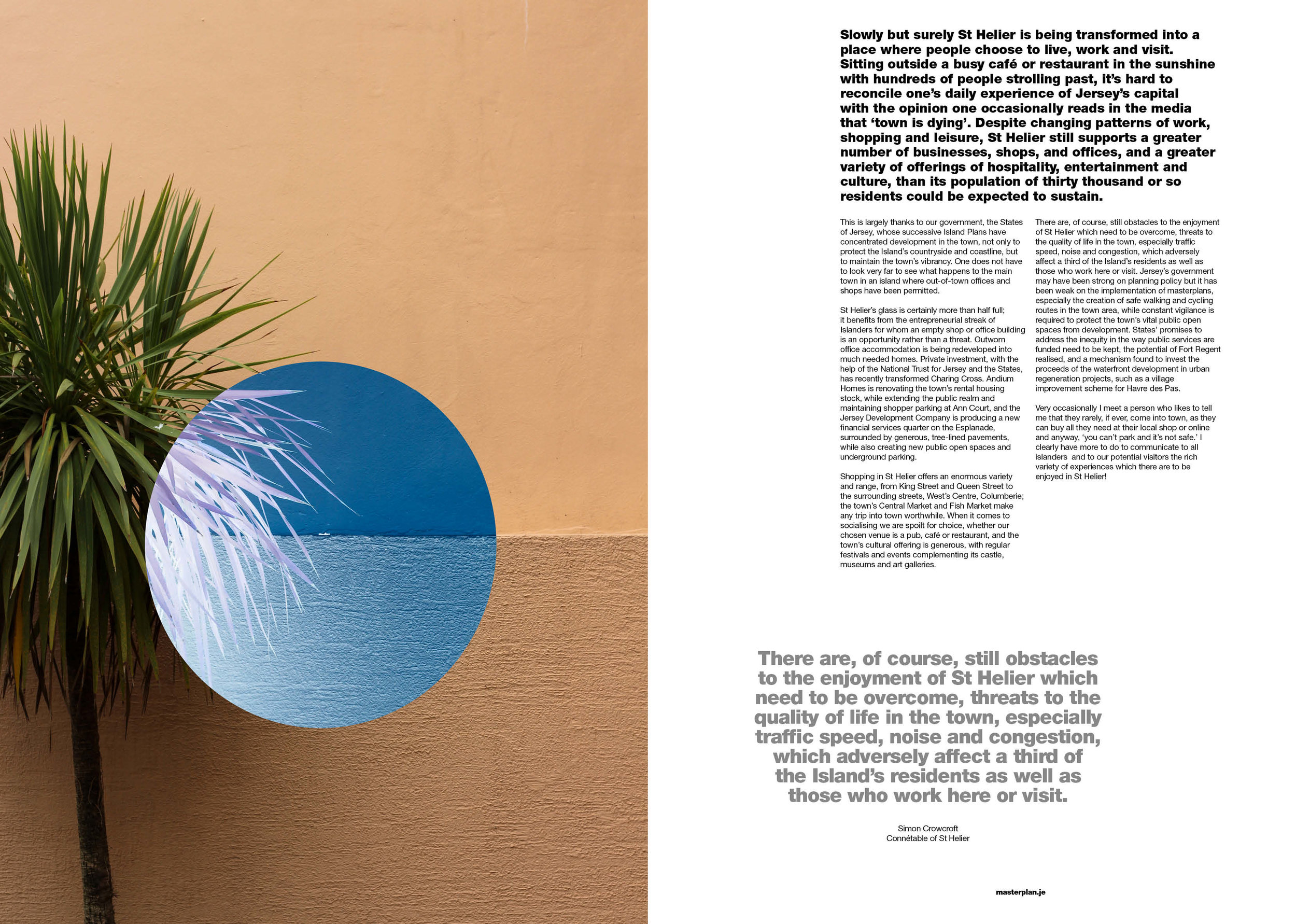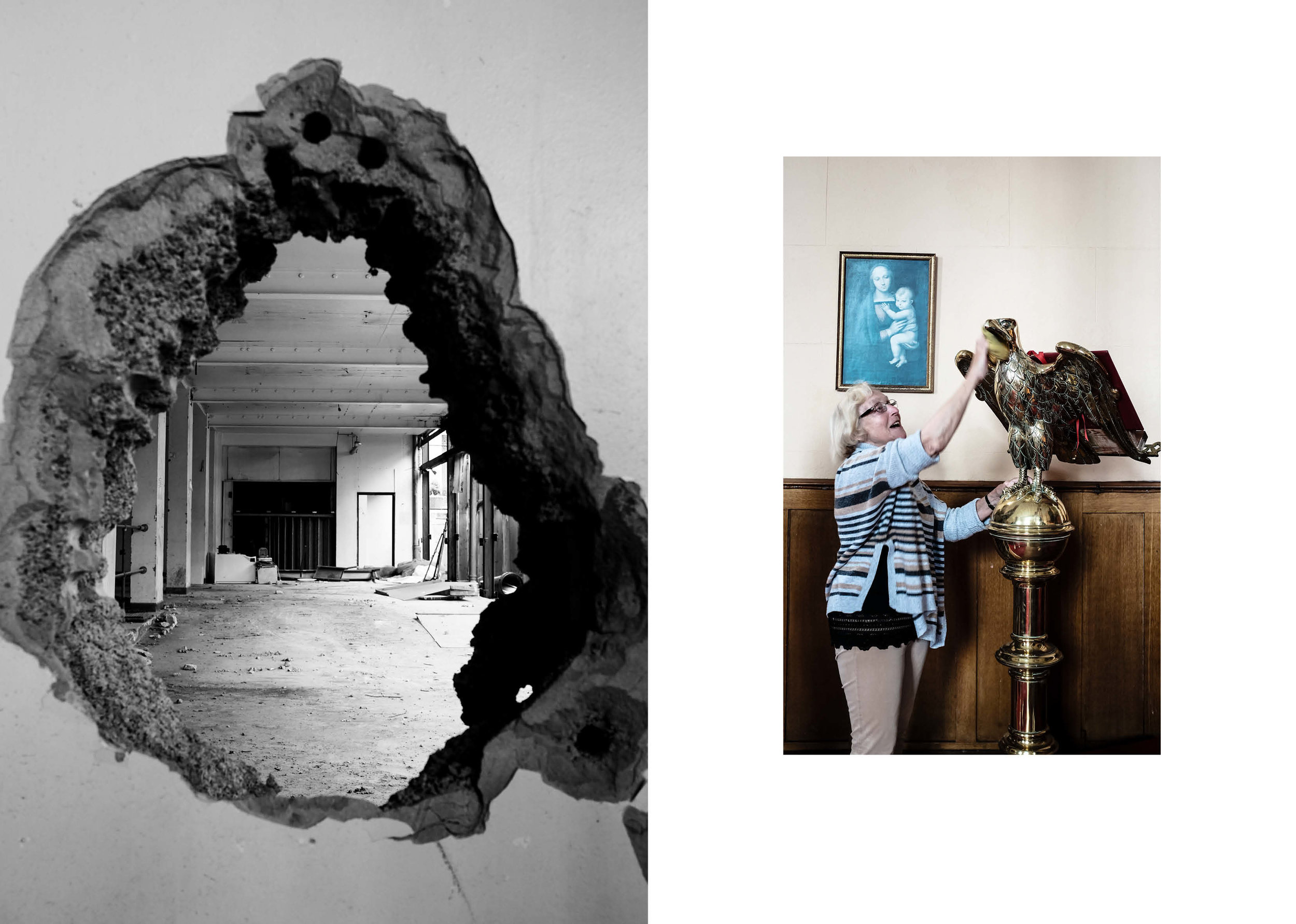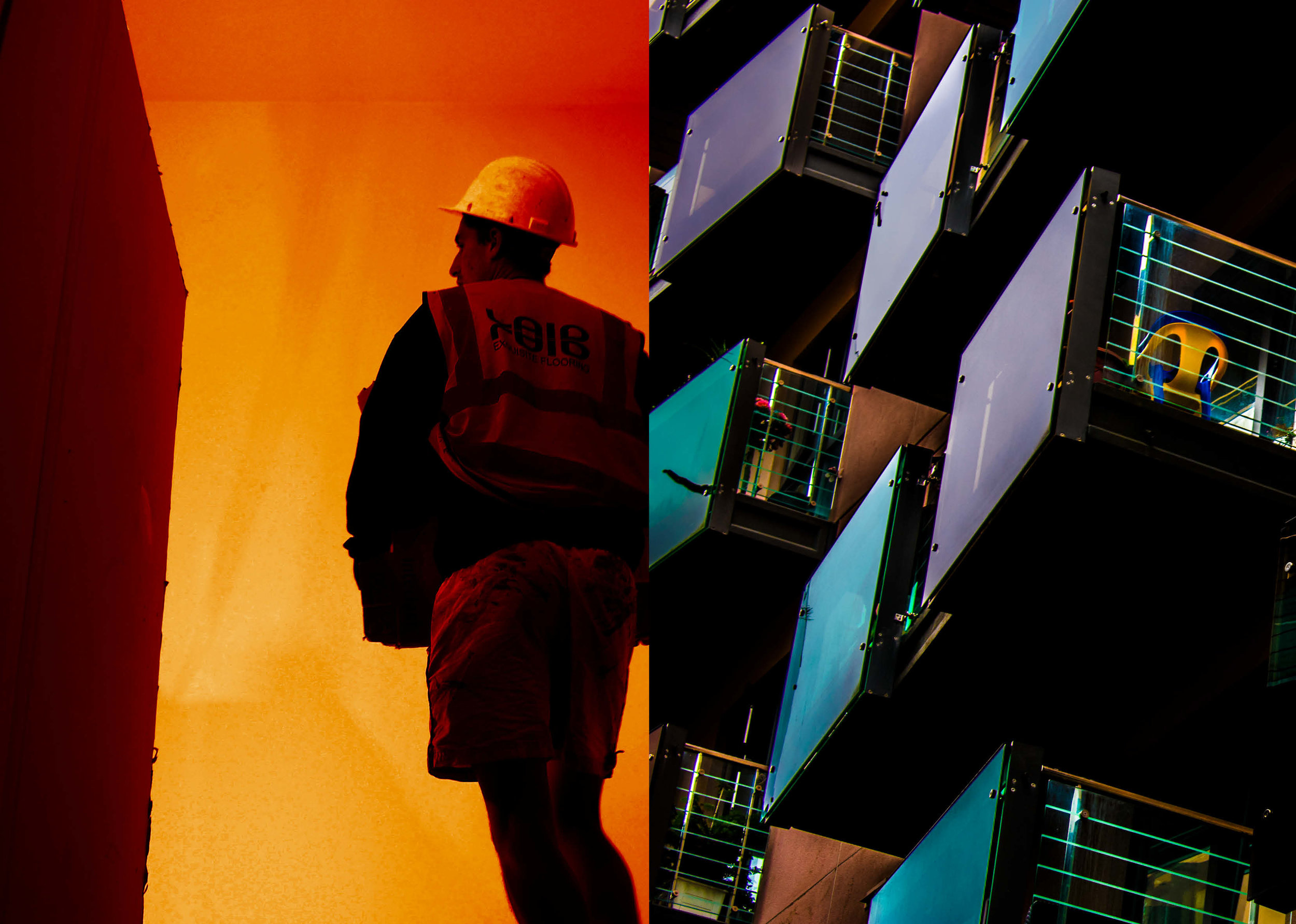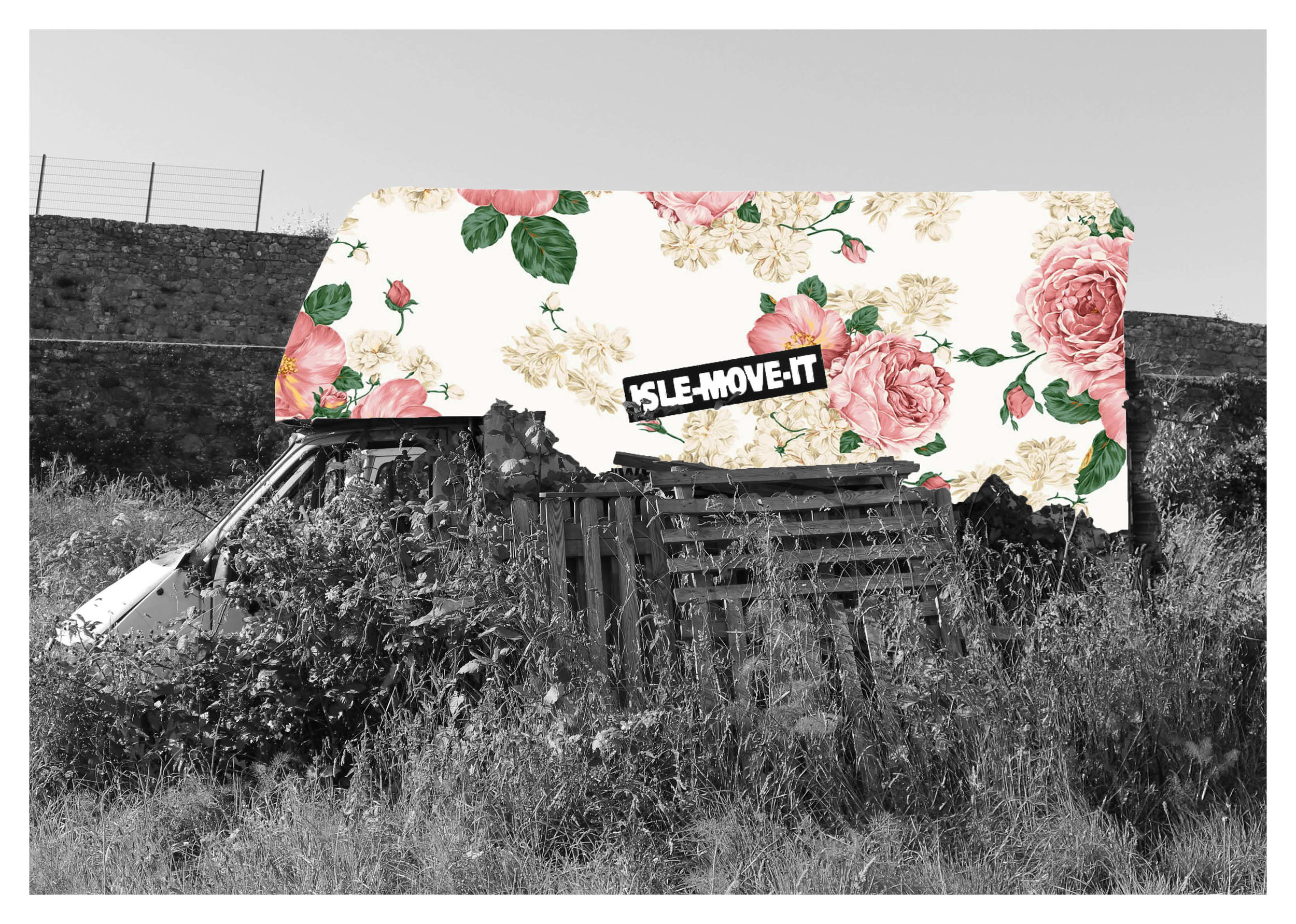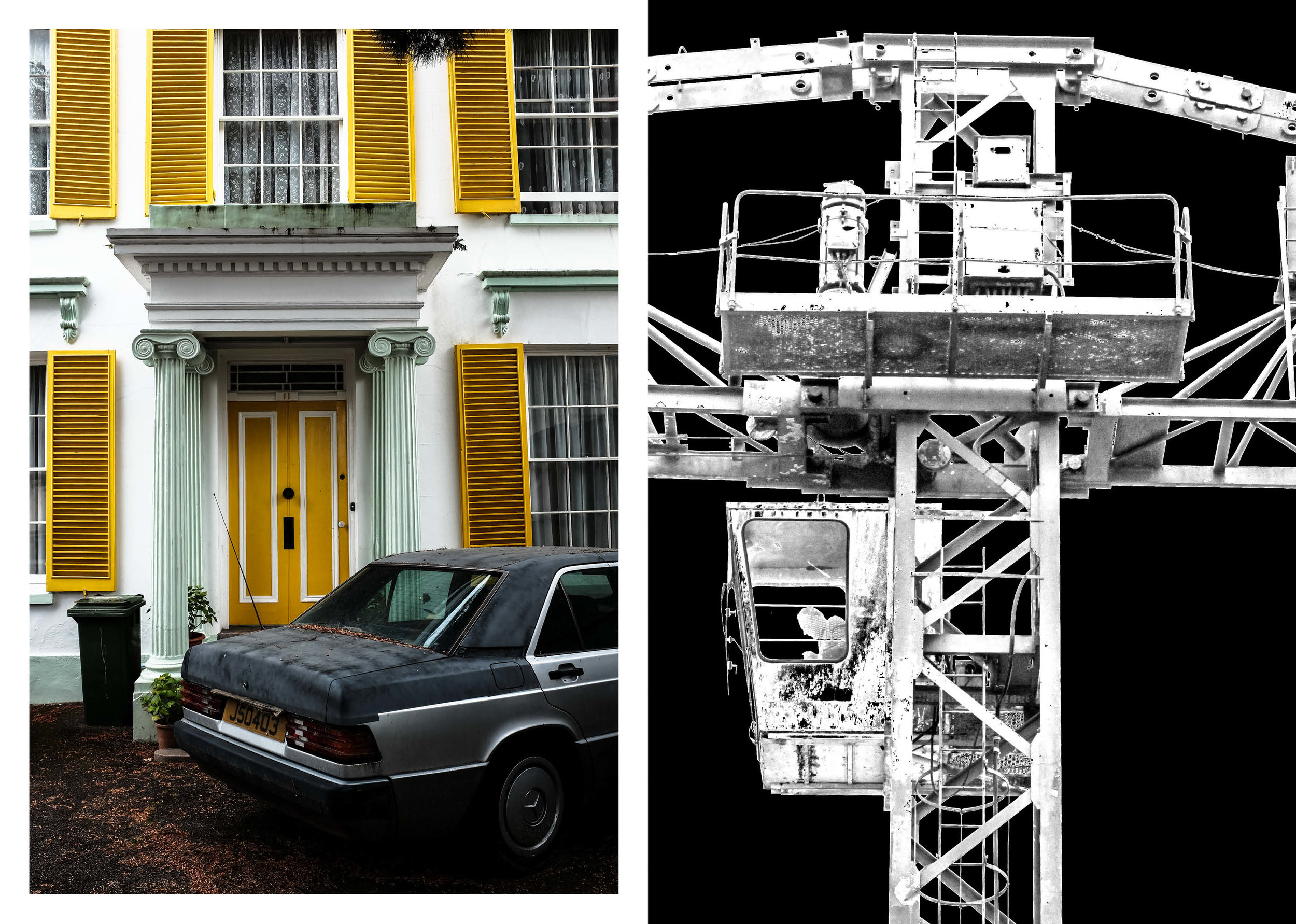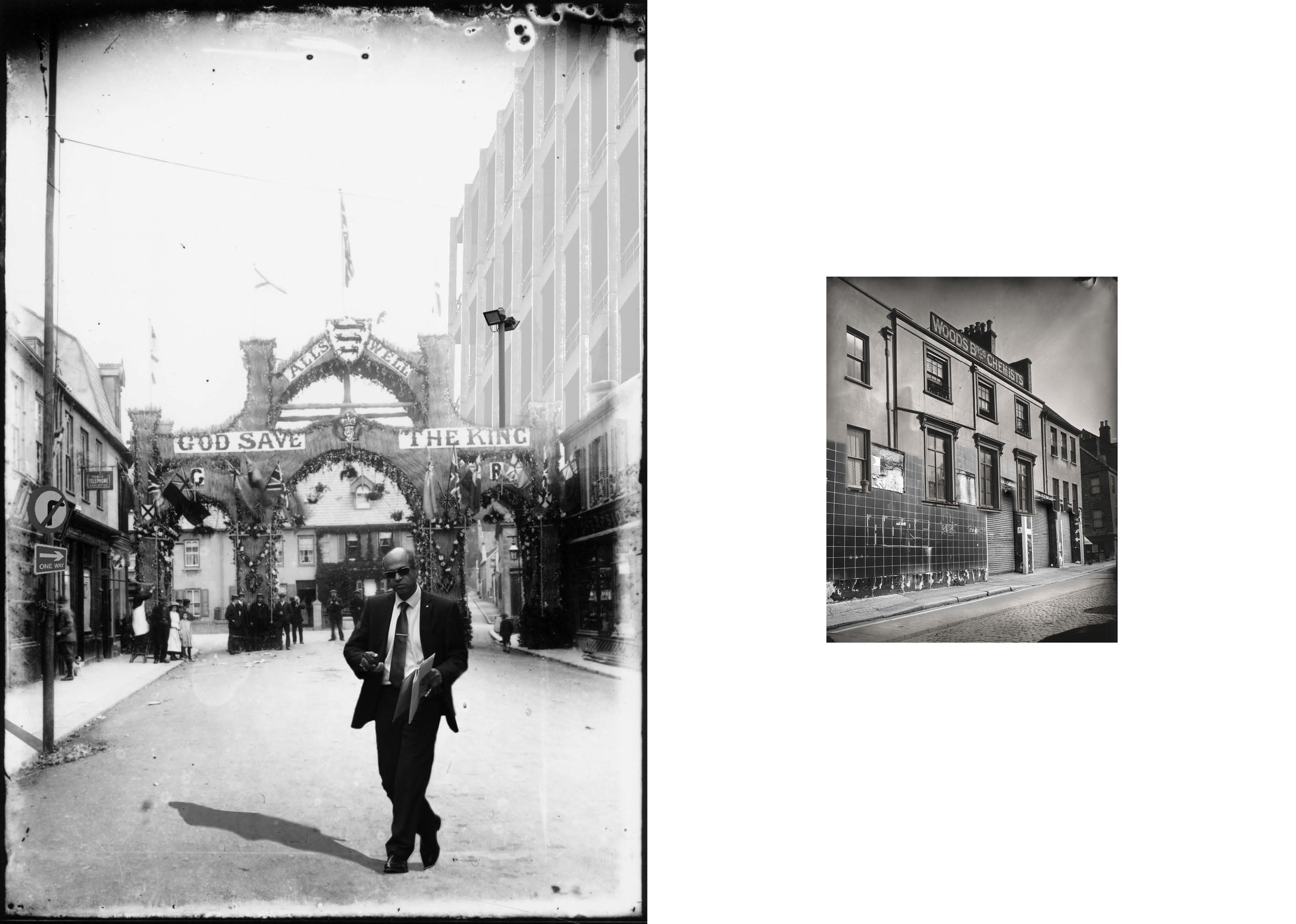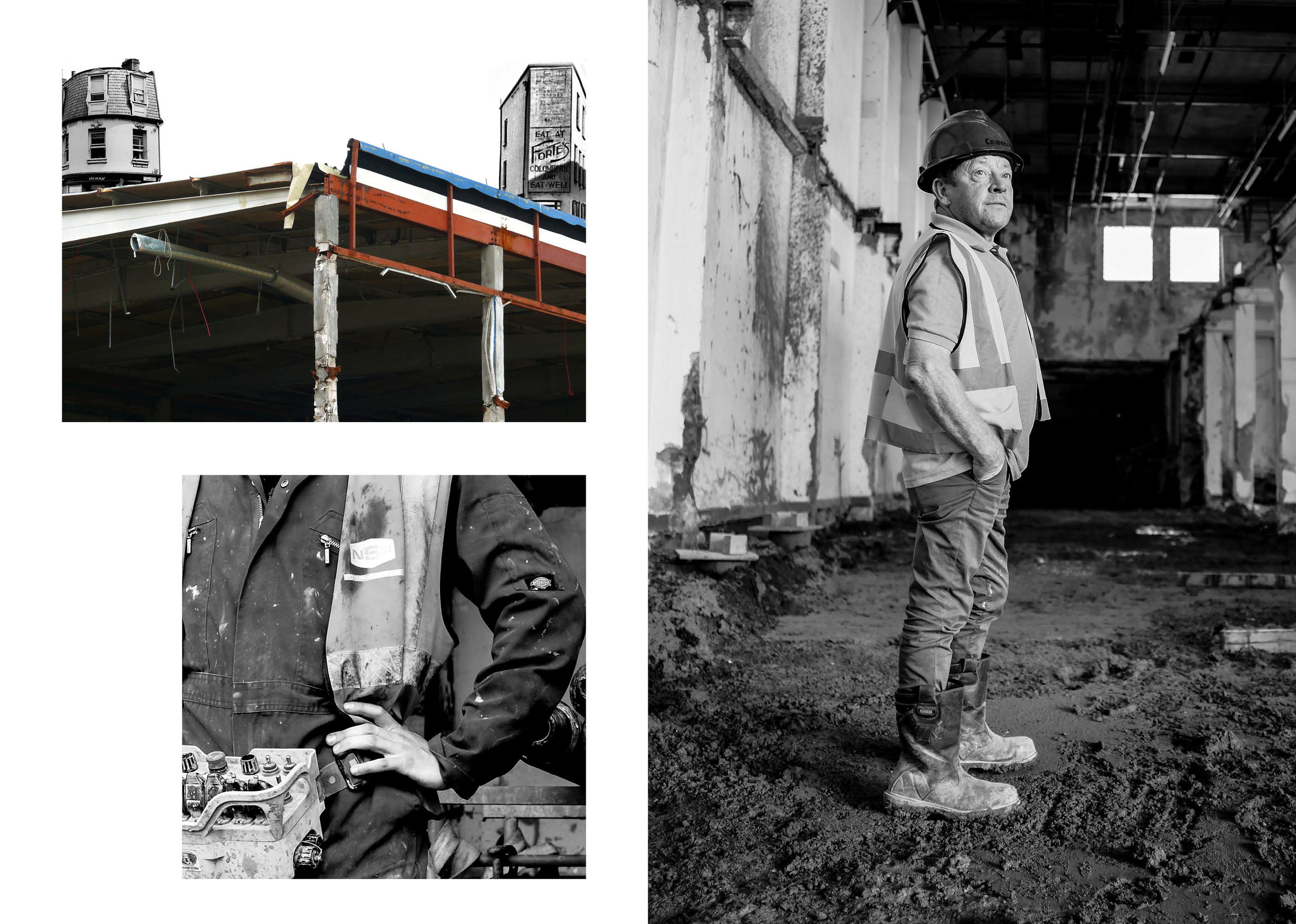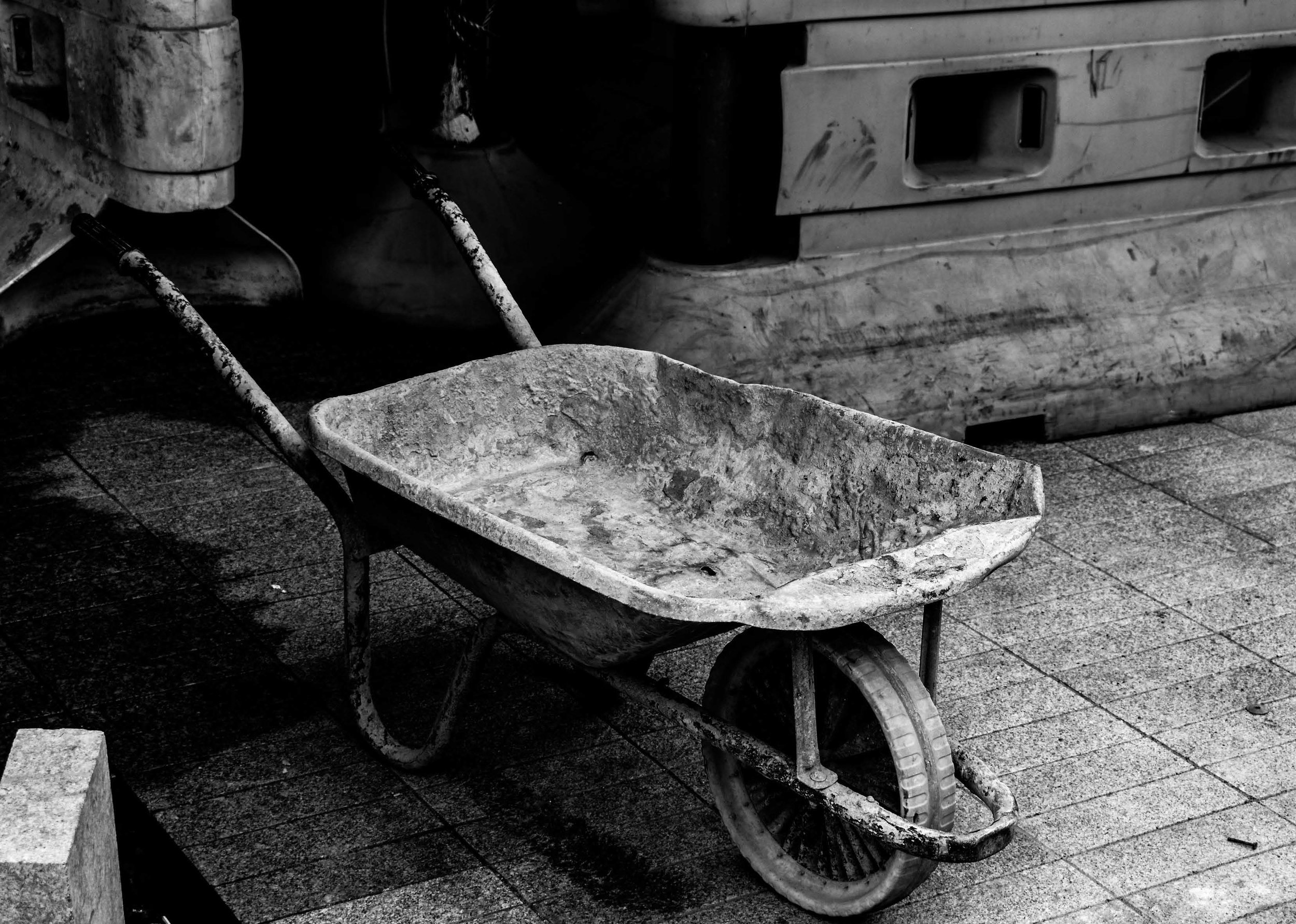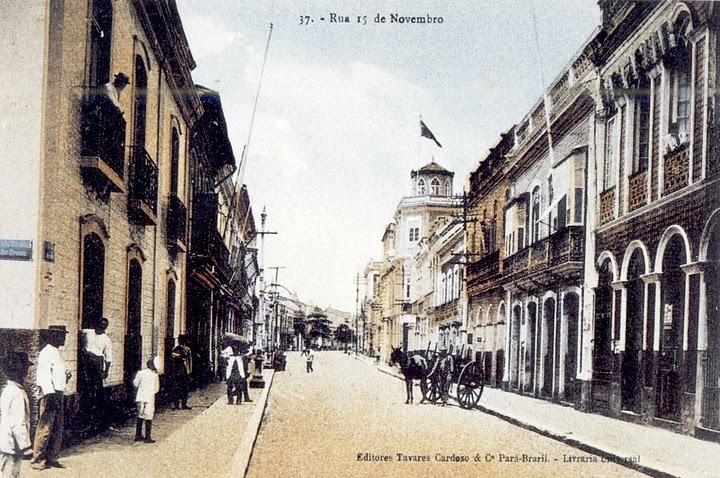Jersey’s business community, please pick up current edition of Connect published by Bailiwick Express where I’m discussing two of my research and photographic projects, Masterplan and The Seaflower Venture both concerned with the island of Jersey operating as an entrepôt. First trading cod-fish for other exotic commodities such as sugar, coffee and tobacco as part of an international merchant network that can be viewed as a blueprint for a future offshore finance industry. Opposite you can also read about the new appointment of Matt Fiott by ArtHouse Jersey who has moved from being former Head of Brexit Coordination for the Government of Jersey to Executive Producer. We all need funding to continue the production of new work that can question, challenge and explore complex issues and their impact on the island’s economy, identity and geography - só please get in touch to hear about how you can support the arts, culture and archives. For those who can't find a copy here is an online link http://online.fliphtml5.com/ktlu/vlit/#p=45
#masterplan #seaflowerventure #archisle #societejersiaise #arthousejersey
Te Ahi Kā dummy version travelling to my hometown of Aarhus, Denmark /
A dummy version of my new book Te Ahi Kā - The Fires of Occupation is being exhibited this weekend at Photobook Week Aarhus as part of the touring Fotobookfestival in Kassel where it was shortlisted for the Dummy Award 2018. This is particulary special for me as Aarhus is my hometown, where in 1993 I left to seek a new existence and found it through photography. Promotion of the finished version of the book will begin from next week onwards and pre-sales can be made here at Dewi Lewis Publishing https://www.dewilewis.com/…/te-ahi-ka-the-fires-of-occupati…
Dummy version of Te Ahi Kā at Organ Vida - International Photography Festival /
An earlier dummy version of Te Ahi Kā - The Fires of Occupation is currently being exhibited at Organ Vida - International Photography Festival in Zagreb as part of Fotobookfestival in Kassel where it was shortlisted for the Dummy Award 201. The final version is currently on its way from Poland to Dewi Lewis Publishing for worldwide distribution in partnership with Oratia Books in New Zealand. Pre-orders will be available soon!
Future of St Helier video browser /
Here is a video browser of our Future of St Helier supplement printed and distributed in today's edition of the Jersey Evening Post. Hautlieu photography students were challenged with responding to specific areas, streets and neighbourhoods divided up along the urban vingtaines of St Helier and to explore through research, archives and photography the built-environment, urban living, diverse communities, town planning, land use and re-generation projects. Each student designed a page spread which was then split in half producing a fragmented image reflecting on the nature of experience and diversity of St Helier. Make sure to get your copy before the shops close!
Thanks to everyone involved in the creative process Archisle Lewis Bush, Jamie Cole, Simon Crowcroft, Kevin Pilley - States of Jersey and our sponsors Jersey Development Company and Camerons Limited.
Future of St Helier newsprint /
At Masterplan Project we wil be printing Future of St Helier, our 52 page newspaper supplement with Jersey Evening Post on Tuesday 18 Sept. The visual content produced by A-Level photography students at Hautlieu School will hopefully engender a renewed debate in the States of Jersey and its various stakeholders in working towards delivering a sustainable and vibrant vision for the island’s capital and its citizens who either live, work in or visit St Helier.
We would like to thank everyone who have been part of the Masterplan community arts and education project, our sponsors Jersey Development Company and Camerons Limited, all project partners and collaborators, Archisle and its 2018 International Photographer-in-Residence, Lewis Bush, Photo-Archive Societe-Jersiaise, Connétable of St Helier, Simon Crowcroft, Kevin Pilley from Planning Department, States of Jersey, Hautlieu School's Photography Department and alumni, Holly Smith, James Shepherd, Robbie Dark, Shannon O' Donnell and Max Le Feuvre. Be sure to get your copy of the JEP next Tuesday!
#masterplan, #futureofsthelier18
Portrait of Britain Britain 2018 Book Launch /
Join us tonight in London for Portrait of Britain Book Launch Party, published by Hoxton Mini Press in association with The British Journal of Photography and JCDecaux. My portrait 'High Net Wortk Individual' showing Mr Stuart Weaving in his penthouse apartment on the Esplanade in the heart of Jersey’s finance district is selected as one of the winners. Part of my long-term Masterplan Project – a visual record of finance in collaboration with Archisle and Photo-Archive Societe-Jersiaise
Winner in Portrait of Britain 2018 /
My portrait High Net Worth Individual has been selected as one of the winners in Portrait of Britain 2018 exhibition in association with The British Journal of Photography. You can see all the winning portraits on JCDecaux screens nationwide throughout the month of September as part of the biggest exhibition of contemporary portraiture in the UK. The portrait will also be will be featured in the first ever Portrait of Britain Book, published by Hoxton Mini Press with an introduction by Will Self at a launch on 6 September in London.
The portrait is of Stuart Weaving one of the original wealthy residents who came to the island of Jersey in the late 1960s and granted 1(1) (K) status requiring him to rent or buy properties above a set value in return for favourable tax arrangements. Jersey is a place that actively market itself as an ideal location for wealthy individuals to settle with their families and businesses. It’s worth noting that in 2017 Locate Jersey, the Government body set up to manage High Value Residency had 155 enquiries with 34 HVI applications approved - a significant increase compared with 2016.
The portrait is part of Masterplan - a five year collaborative project with Archisle and Photo-Archive Societe-Jersiaise using photography, film and archival research to tell the story of Jersey’s economic growth and development. #portraitofbritain2018, #bjp1854, #JCDecaux, #hnwi, #masterplanproject
Stuart Weaving is a British expat from South Africa who came to live in Jersey in the late 1960s. The portrait is from a five-year project about Jersey’s economic growth and development in the 20th and 21st centuries.
Dispatch #6: Brazil /
After an eventful 24 hours of having my iPhone stolen by someone else at the hotel I stayed at in Recife and spending the best part of a day at a police station, I have parked the car after driving over 4000 kilometers and instead flown to Belém at the Amazonian River basin - a further 2000 km up north visiting the last entrepôt in the Jersey – Canada – Brazil merchant trade triangle. In these parts of Brazil Apple products are luxury items and without the inconvenience of the usual sort of losing a mobile phone with all your contacts etc, it has been my compass and speech in one using Google maps and translator for finding locations and communicating with people.
Beginning to slowly digest and reflect on the past three weeks spend travelling across the three states of Bahia, Alagoas and Pernumbuco in the heartland of colonial history searching for trade networks with Jersey merchants concerning the production of mainly sugar, tobacco, coffee, cacao and cotton - part of my project is looking at the different commodities exchanged in the export/import market that Charles Robin (and other Jersey cod-merchants) established as part of the Atlantic trade.
In the early to mid-19th century Salvador was a world leading metropole operating on a larger scale than Rio de Janeiro and even New York. On my way to Salvador I visited a cacao plantation in the area around Ilhéus, once one of Brazil's largest exporter of the cocoa bean and near the border between Muritiba and Mangaebeira I had a special tour by Gersia Silva, Marketing Manager of Fazenda Terra Danneman, or rather DANCO as it is known locally - one the largest tobacco plantations in Brazil specialising in producing the finest cigars and cigarillos in the world for mainly German, Austrian and Swiss markets.
Its founder Geraldinho Dannemann arrived from Bremen in Germany and established his cigar factory in the province of Bahia in 1872 in Sao Felix on the bank of the river Rio Paraguaçu, connecting São Félix to its sister town of Cachoeira, a major gateway and trading route to the capital, Salvador, from where the sugar and tobacco were shipped to mainly Europe - and where Robin would be trading his cod-fish (interestingly enough Bremen was also a port that Robin traded with.)
The Dannemann company is now part of a large Swiss corporation, BS Group (Burger Söhne AG) – a family owned multinational company that is manufacturing, marketing and selling high-end brands of, mainly tobacco and chocolate with production in over 10 different countries around the world. The founder of Dannemann also included his family in the management of the business, like its current owner (founder of BS Group was Rudolph Burger a former farmer and timber merchant in 1864)
Comparing it to the ownership and management of Charles Robin Company, it was a similar network of family and marriage ties that maintained control over the business until the financial crash of Jersey’s Savings Bank in 1886 that signalled the beginning of the end of the cod-fisheries in Gaspé by Jersey firms - although the Robin brand continued to trade up until 2006 under various ownerships and business guises. In fact, when I visited the Gaspé Peninsula in the summer of 2017, the Robin name is still visible across retail and tourism industries with numerous general stores and museums/sites branding it with the CRC logo. Part of my project’s conceptual underpinning is looking at how the Robin name and legacy are performed and presented all along the Bay of Chaleur.
Depending on points of view and historical bias, those Canadians with French ancestry view Charles Robin as an evil imperialist who exploited the honest labour of the local fishermen. For Anglophile Canadians, and especially those with Channel Island connections, Robin was a brilliant entrepreneur and businessman who founded Canada’s second oldest incorporated company. What interests me is the space between fact and fiction where stories or myths are constantly re-told and re-invented.
Rosemary Ormer gives a detailed account in her book on Jersey- Gaspé fishery on how the management apex of the Jersey merchant triangle established power structures and created effective political strategies designed to enhance Jersey ability to influence the larger United Kingdom metropole through a network of business interests formed by merchants and the creation of the Chamber of Commerce.
Ormer writes, ‘ The operation of the Chamber [of Commerce] provide a picture of Jersey mercantile interests at work at the ownership apex of the triangle as these interests sought to control as much as possible the larger world beyond the coasts of Jersey’
Even then Jersey’s relationship with the UK was vital to maintain some influence of the merchant triangle. The parallels with Brexit looming and Jersey’s frantic political and corporate diplomacy to protect its main industry (finance) from harm when Britain leaves the European Union is palpable. Jersey’s business community in the 18th century understood perfectly well its vulnerabilities and used well rehearsed tactics to manipulate both political and economical upheaval by constantly ‘reminding its trading partners of both Jersey’s loyalty to the British crown and its geographical advantageous position close to the coast of France.’ (Ormer)
The Seaflower Venture project emerged from research into the origins of Jersey’s banking history undertaken as part of Masterplan a parallel project focusing on the story of the island’s finance industry. The island’s merchant trade, conducted across multiple outposts, can be seen as a blueprint for a future offshore financial services industry.
From research earlier today in the public archives in the city of Belém I came across a glossy coffee table sized book (think Taschen) titled Belém da Sausada (Belém so Satisfied) produced in 1908 by the Governor of the State of Pará and his board of state executives. It was essentially a piece of marketing material produced to entice inward investment from international businessmen and corporations as well as targeting Europeans to emigrate to Brazil, or more precisely Pará.
Reading it was like browsing through a copy of Jersey Finance Limited’s annual edition, First For Finance on why Jersey is one of the world’s leading jurisdictions best equipped with managing wealthy individuals, families and corporations assets and investment portfolios. This oversized sales catalogue made many assertions beginning with a quote from Alexander von Humboldt, a Prussian explorer and exponent of Romantic philosophy and science who in 1800 wrote from his travels in Latin America that: ‘In the near future the Amazon region will be a centre of civilization and the store house of the world’ The Governor and his board of directors than carry on with an extraordinary estimation that ‘this marvellous district, honey-combed in every direction by fertilizing rivers will some day contain a prosperous population of 20-30 million souls. Indeed 200 million men could live comfortably in this glorious land.’
Of course, this prophesy was wildly exaggerated and the State of Pará today have a population of around 7.5 million. The sales pitch ends with a poetic rendition on how money has no domicile using flow of water as an analogue for flow of capital - which in a kind of funny way could also describe how offshore finance works today, ‘money has no home. It circulates all over the world like those endless and erratic currents in the ocean, which are somehow or other ever drawn to shore, where their influence is most needed and yield the best results.’ Perhaps Jersey, an island surrounded by water should adopt this emblem as a motto for attracting inward investments?
The large book also provided tables and figures on trade and commerce and I was struck by how much presence British, or rather companies headquartered in London had on managing infrastructures in the state of Pará with large contracts to operate anything from the commercial ports of Belém, distribution of electricity to maintaining roads, parks and sanitation. Several banks with London connections also had a strong foot print in the financial sector with names such as the London and Brazilian Bank, London and River Plate Bank (by 1923, Lloyds Bank acquired control of both banks) offering financial services and constructing large and impressive new offices in the commercial banking centre of Belém. Tracking down the address and building of the former London and Brazilian Bank the Victorian architectural façade now somewhat dilapidated (like most of Brazil’s colonial architecture) and now home to a pound store version of cheap baby clothes called So Atacado (translates as So Attached.)
What was also noticeable from the data used in promoting Pará as the ‘California of South America’ was how the state finances were measured using Pound Sterling as its official currency. It was clear that Brtain’s influence in Brazil at the turn of the century was still significant since its colonial period when the UK helped the Portugese Royal family with safe passage across the Atlantic in their forced exile from Portugal. There is no doubt that Charles Robin and other Jersey firms were benefitting from Britains close ties with Brazil in both domestic and international trade and I know from reading some of Charles' letters in his Letterbox (in the archive at Musée de la Gaspésie in Gaspé City) that he was very protective of his commercial interests and was a master in corresponding with a vast international network of business associates and agents in his cod-fish trade empire.
Just as I arrived in Belém I got news from the Police in Recife, that they had apprehended my iPhone. In some ways I had resigned to the fact that my stolen phone was a kind of sacrifice, or offering that I had to make in allowing me permission to visit these lands and learn about Brazil and its nation of people with diverse ethnic backgrounds. But, of course the reality was a much simpler explanation, and less rarefied as my phone was stolen because I foolishly did not lock my door to my room while fetching a bag from my car and the culprit was arrested because we could track my phone online using Apple’s ‘ find my iPhone’ app – so, I suppose, I am thankful for one corporate dominance in the mobile phone technology market.
Rua 15 de Novembro - Ao fundo, o Edifício London Bank (on the right) A handtinted postcard from Belém da Sausada




